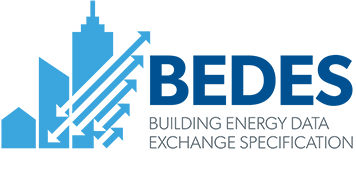LBNL
| Term | Term Definition | Options | Unit of Measure |
|---|---|---|---|
| Age |
Age of premises or equipment in years. |
View | years |
| Air handling unit | View | None | |
| Automated system optimization | ASO analytics continuously analyzes and modifies Building Automation System control settings to optimize heating, ventilation and air conditioning system energy use while maintaining occupant comfort. It reads data from the BAS and automatically sends optimal setpoints back to the BAS to adjust the control parameters based on data such as submetered energy use and energy price signal. | View | None |
| Boiler | View | None | |
| Boolean |
Generic term to add boolean constrained list options to any term |
View | None |
| Burner | View | None | |
| Chiller | View | None | |
| Cooling tower | View | None | |
| Date |
Date |
View | YYYY-MM-DD |
| Date Status |
Status of the associated Date |
View | None |
| Demand management | Provide peak demand monitoring. Provide notification when the demand for critical metered loads passes a threshold. | View | None |
| Diffuser | View | None | |
| Distribution center | Distribution center | View | None |
| Duct | View | None | |
| Electric lighting | Primary lighting source is electric. | View | None |
| EMIS Feature |
Features of an Energy Management and Information System |
View | None |
| Energy consumption and costs visualization | Track and provide views of the meter points on a sub hourly (e.g., 15-minute) basis. Provide visualizations of real-time (and historic) energy consumption and costs. | View | None |
| Energy information system functionality | EIS analytics focus on meter-level monitoring, analysis, and charting (hourly or more frequent consumption data, at the whole building or submeter level). Advanced EIS analytics incorporate automated opportunity analysis that typically includes predictive energy models that identify energy use anomalies and measure project savings. | View | None |
| Energy information system key performance indicator tracking | Track KPIs for energy related metrics, such as equipment, system, or building level energy use intensity, greenhouse gas emissions. | View | None |
| Energy management and information systems | Combined hardware and software products that comprise a broad range of analytics functionality and services to manage commercial building energy use. Specific EMIS capabilities are listed under the EMIS Feature constrained list. | View | None |
| Energy performance analysis | Analyze interval energy data and provide actionable information. Common analysis includes time series load profiling, heat map visualization, benchmarking, baseline energy consumption modeling, and energy anomaly detection. | View | None |
| Energy reporting and data export | Provide a default or customized energy report. Allow users to export energy data. | View | None |
| Fan | View | None | |
| Fancoil unit | View | None | |
| Fault detection and diagnostics | FDD analytics automates the process of detecting faults and suboptimal performance of building systems and helps to diagnose potential causes. It focuses on system-level monitoring, analysis, and charting using Building Automation System data. Tools with FDD functionality pull data from the BAS, and may provide a report of the duration and frequency of faults, cost and/or energy impacts, and relative priority levels. | View | None |


